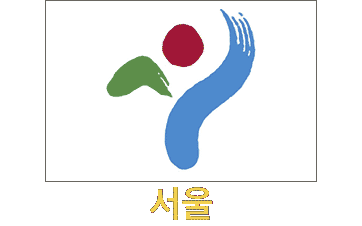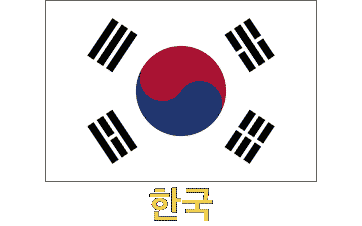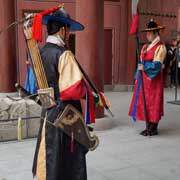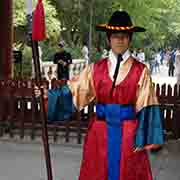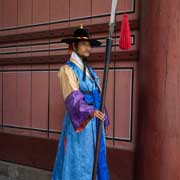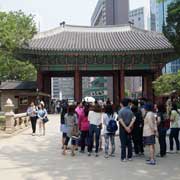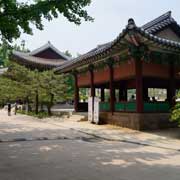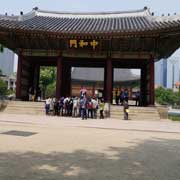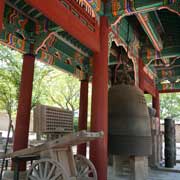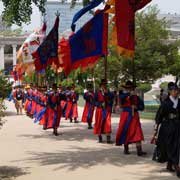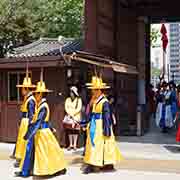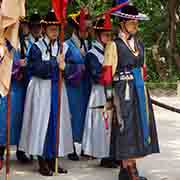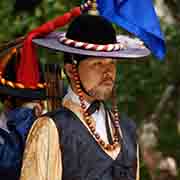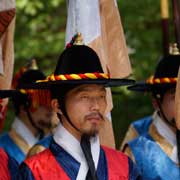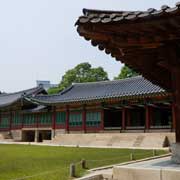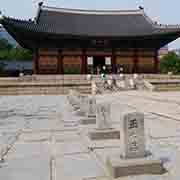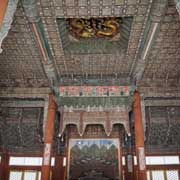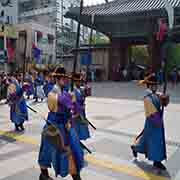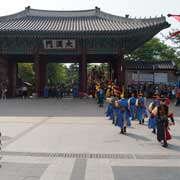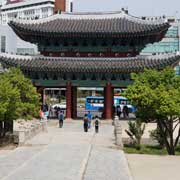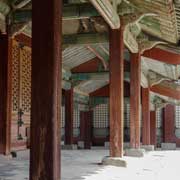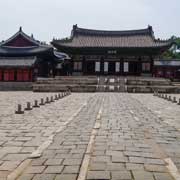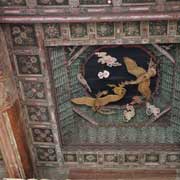Photos of Deoksugung and Changgyeonggung Palaces, Seoul, Korea
Deoksugung and Changgyeonggung Palaces, Seoul
Deoksugung, Deoksu Palace, is one of the “Five Grand Palaces” built by the kings of the Joseon Dynasty (1392–1897), located west of Gyeongbok Palace (Gyeongbokgung), the main royal palace. Korea’s royal family members inhabited the walled compound of palaces until the Japanese occupation and the following colonial period around the early 20th century. Like Seoul’s other “Five Grand Palaces”, Deoksugung was deliberately partly destroyed during that colonial period. Only one-third of the structures standing before the occupation remain. The buildings are of varying styles, traditional wooden buildings, but some were built of stone resembling western-style palaces.
you may then send it as a postcard if you wish.
Since 1996 Deoksugung Palace has held a guard-changing ceremony three times daily, in front of the main Daehanmun Gate. After thorough historical research, the procedures carefully follow how it was done during the Joseon dynasty. It involves 50 participants in splendid Joseon-era costumes, and the whole process lasts for thirty minutes.
Changgyeonggung (“Palace of Flourishing Gladness”), just east of Changdeokgung, was initially the Summer Palace of the king during the Goryeo dynasty, which lasted until 1392 when the Joseon Dynasty rose to power; it later became one of its Five Grand Palaces. It was renovated and enlarged in 1483 by King Seongjong and received its current name. The Japanese largely tore down Changgyeong Palace in the early 20th century to make room for a modern park, including a zoo, botanical garden, and museum. In 1983 the zoo was relocated, and restorations of the palace buildings have taken place, like the Honghwamun, the palace’s main gate and Myeongjeongjeon (main hall) - both first built in 1484, both burned down during the Japanese invasion of 1592 and rebuilt in 1616.
